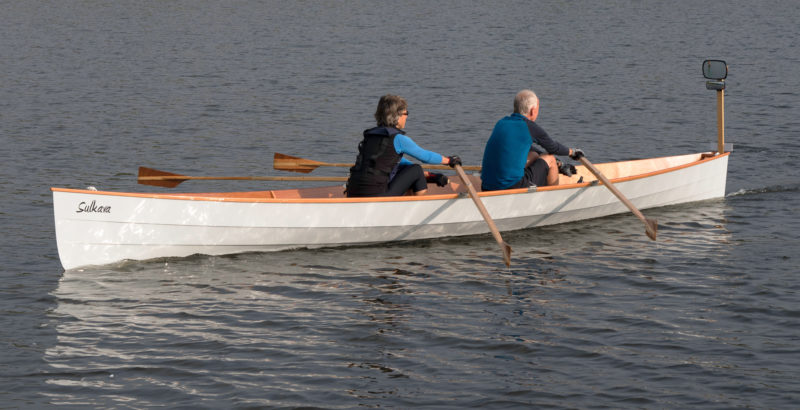 Mark Wilson-North
Mark Wilson-NorthThe post at the stern supports two mirrors; the larger one at top provides a good view forward, and the wide-angle mirror below it takes in a broader view. Mirrors are common fixtures on rowing boats used in races in Finland.
Tim Murfitt of Norwich, England, has been puttering with small boats, mostly power boats, for more than 40 years and grew weary of their speed and noise. He thought taking to the water with a pair of oars would be a good change of direction for his boating, and although his only experience with rowing was on dry ground with a rowing machine, he felt confident that he’d enjoy rowing. He wasn’t so sure that his wife would. Walking was Wendy’s preferred exercise and she wasn’t comfortable around boats or water.
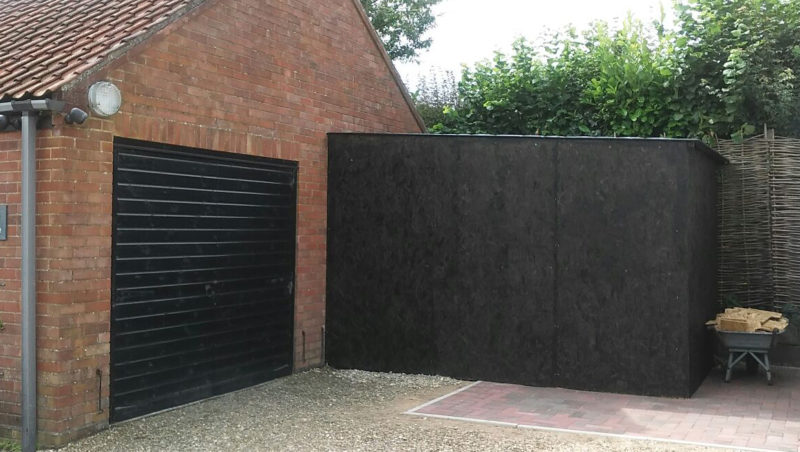 Tim Murfitt
Tim MurfittThe garage wasn’t long enough to house the building of the 21′ 4″ boat, so Tim built an extension for the boatshop bay.
Tim wanted the option of rowing with someone as well as by himself, and it wasn’t likely that whomever he rowed with would have much experience, so the boat had to be stable and forgiving, and easy for novices to adapt to. And while he had turned away from fast powerboats, he still wanted his rowing boat to be fast and easily driven. Narrow racing shells and trainers were out—they’d restrict his rowing to protected waters and he’d miss touring nearby coastal estuaries, which can get a bit choppy when the easterlies hit England’s east coast. The boat had to have some sea-keeping abilities and still be light enough to car-top.
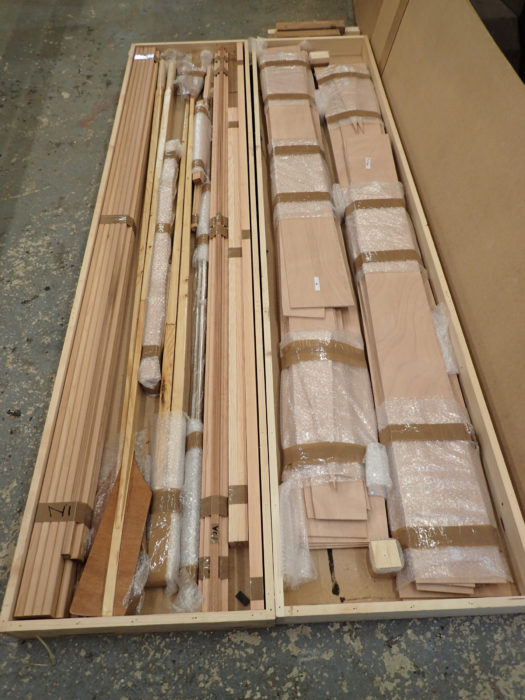 Tim Murfitt
Tim MurfittThe Savo 650 kit arrives in two boxes and includes parts for the oars.
Tim didn’t find any ready-made boats on the market that met his practical requirements and standards of beauty, so he expanded his search to kit boats. Most of the offerings were hard-chine, stitch-and-glue boats, and not to his liking.
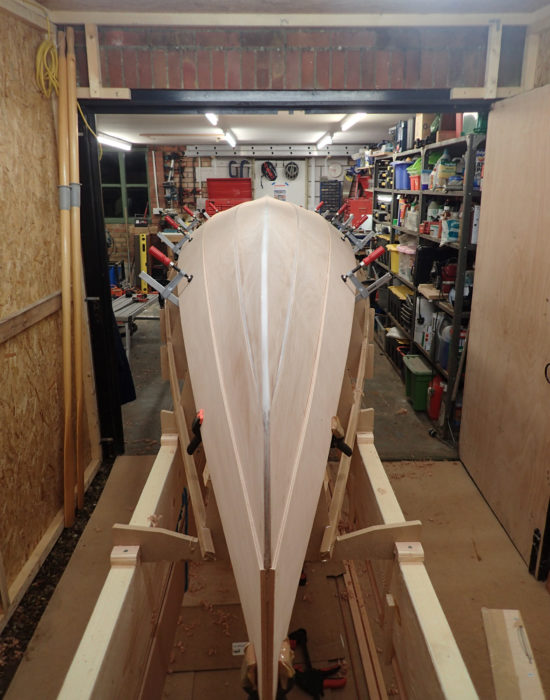 Tim Murfitt
Tim MurfittWith the sheerstrake yet to go, the Savo 650 shows its shallow-V bottom.
His meandering search led him to the Puuvenepiste web site. When he saw the Savo 650 he knew instantly it was what he had been seeking. The 21’4” lapstrake boat, designed by Ruud van Veelen, had performed well in races on Finland’s inland waters.
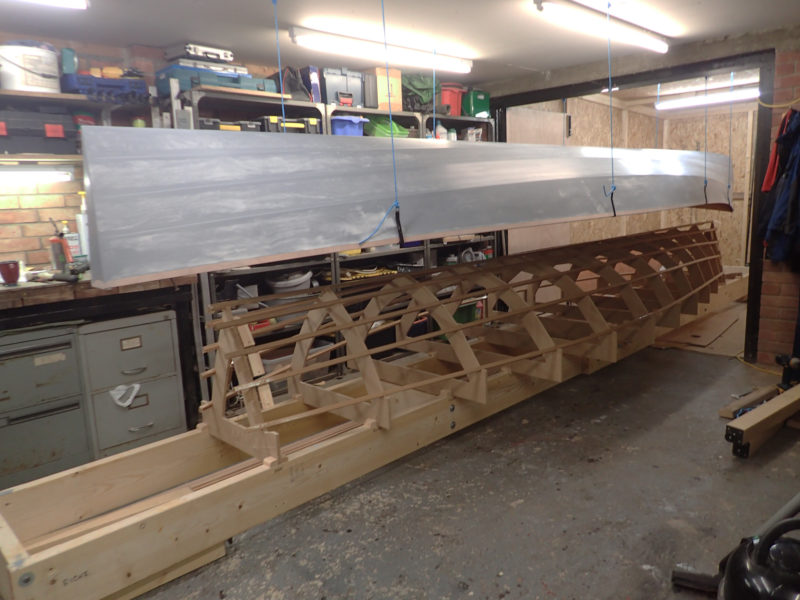 Tim Murfitt
Tim MurfittAfter the planking was completed, the hull was lifted and suspended by cords so the stringers and molds could be dismantled. The strongback remained to support and align the hull when it was set right-side up for the remainder of the construction.
Unfortunately, Puuvenepiste didn’t offer the Savo 650 as a kit, so Tim kept daydreaming and visited the web site often. He went to the site one day and saw that a kit was now being offered. He got on the phone to Finland and ordered it. He’d be the first amateur builder to produce a Savo 650.
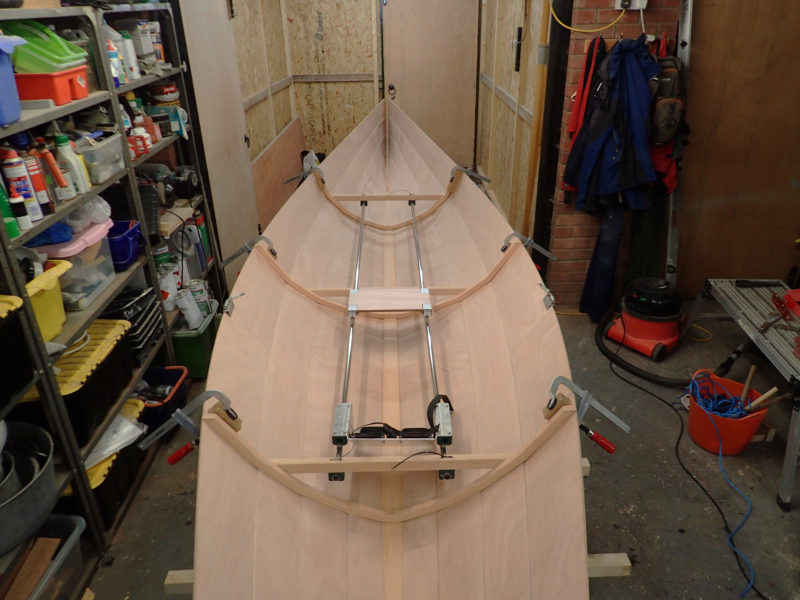 Tim Murfitt
Tim MurfittThe continuous rails make it easy to switch from two rowing stations to one and back again. The bow occupies the garage extension.
His garage wasn’t long enough for the boat, and after the kit arrived he added a temporary 10’ extension to his garage. The boat is built over molds on a strongback, as opposed to assembling pieces by the stitch-and-glue method. The result is a truly fair hull lighter than a stitch-and-glue equivalent that requires filets and fiberglass tape. Like many first-time builders, Tim thought putting the hull together would be the hardest and most time-consuming part of the job, but when he got to the painting and varnishing he discovered that the work was challenging and perfection was unattainable. Varnish ran and paint collected dust. He had to find a level of finish that was good enough and leave it at that.
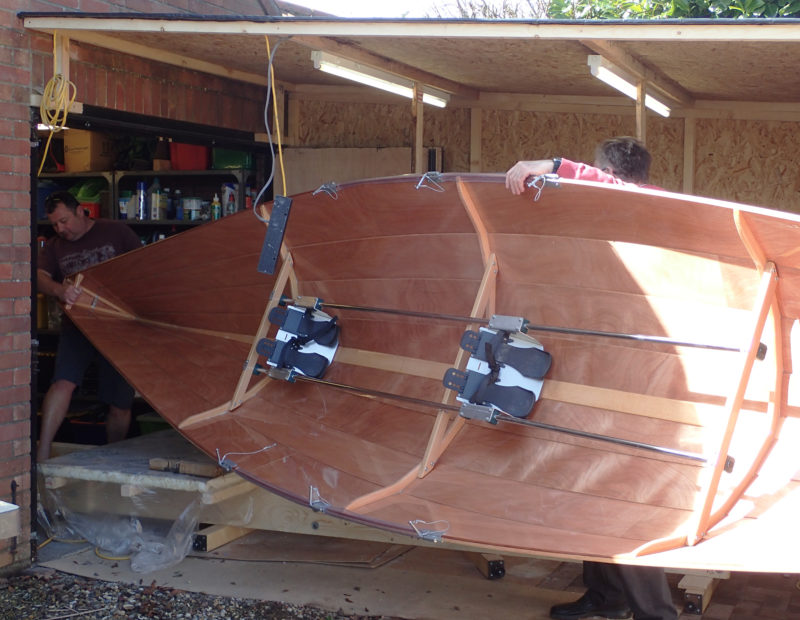 Tim Murfitt
Tim MurfittGetting the boat out of the shop required dismantling the garage extension.
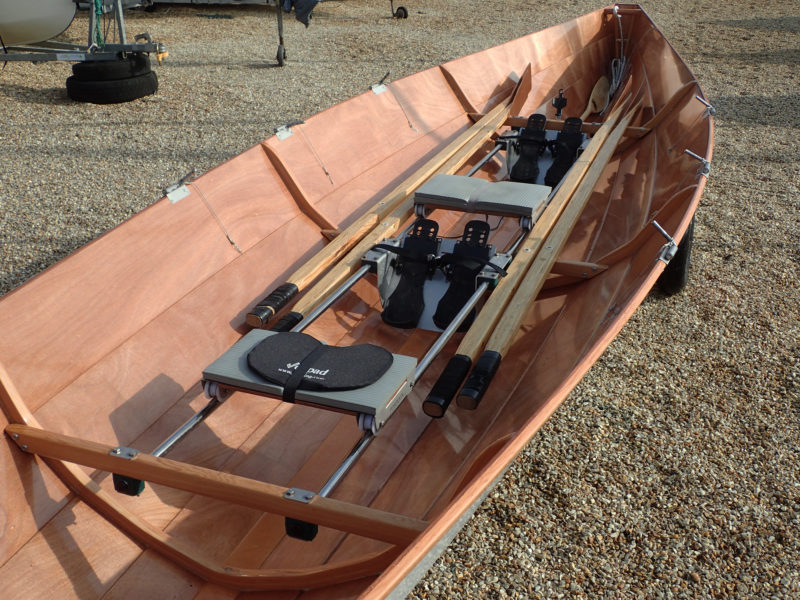 Tim Murfitt
Tim MurfittThe oarlocks, typical of those used in Finland, are pivoting pins that fit in holes in the oars. The arrangement doesn’t allow the oars to be feathered.
After six months of work he had the boat, a cart, and a cover ready to go. The side of the garage extension was removed and, with the help of a few friends, the boat emerged. Tim launched the boat at the beginning of this summer and christened it SULKAVA, after the town in Finland that hosts the country’s biggest rowing race. Over the summer and fall Tim rowed 90 miles on his own, 20 with rowing partners, and to his delight, 130 miles with Wendy. Switching SULKAVA from solo to double takes just a few minutes.
He has done all of his rowing to date on the waters of the Norfolk Broads, a network of lakes and streams that flow into the North Sea on England’s easternmost point of land. There is a speed limit for power boats of 4 mph on the rivers and 6 mph on the lakes. The good side of that is that the powerboats keep their wakes down, but the bad side is that they often block SULKAVA’s way and slow her down. She cruises easily at 5 mph, and Tim, a 160-pound, 59-year-old, can keep up a good 6 mph rowing solo if he goes at it hard and steady. SULKAVA has hit 8 mph when rowed flat-out.
 Mark Wilson-North
Mark Wilson-NorthSULKAVA does well just as well as a single as a double. Tim and Wendy do their rowing in Norfolk Broads, a network of rivers and lakes on the easternmost coast of England.
The Murfitts’ car can carry the 100-lb boat on its roof racks, but it takes the help of another strong back to get it loaded and unloaded. A trailer is in the works this winter and next year Tim and Wendy will head for more distant horizons.![]()
Kits for the Savo 650 and other Puuvenepiste boats are available from Puuvenepiste in Finland and Swanson Boat Company in the US.
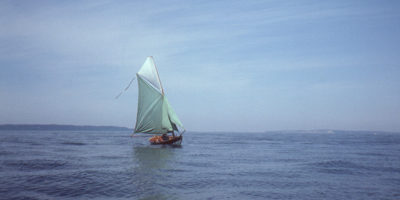
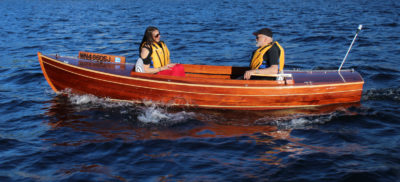
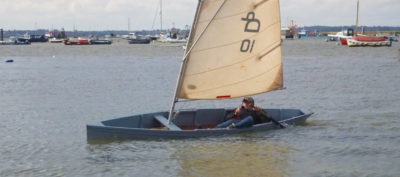
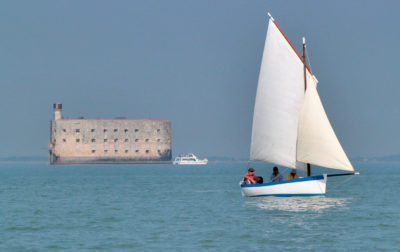
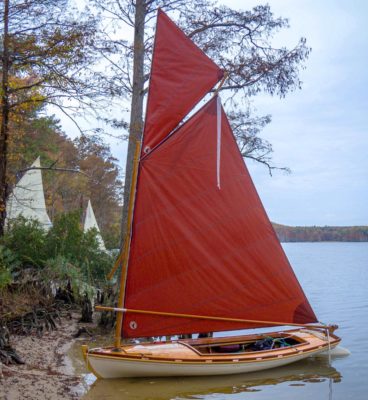
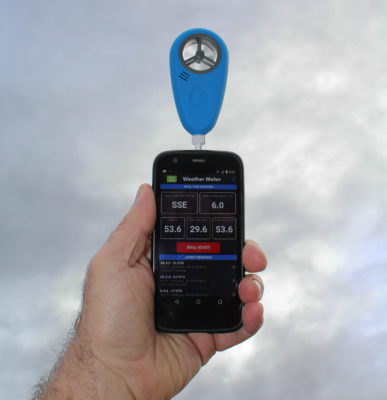
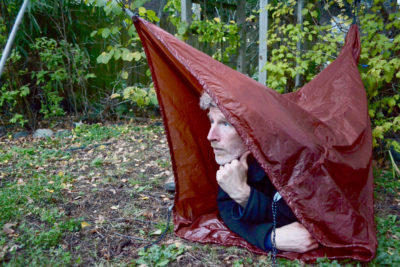
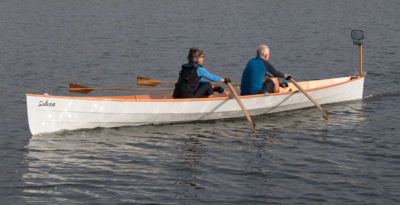
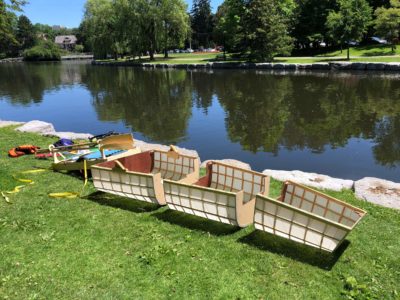
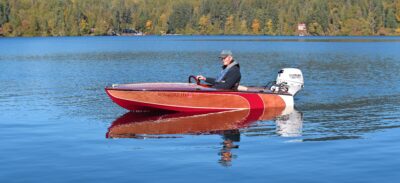
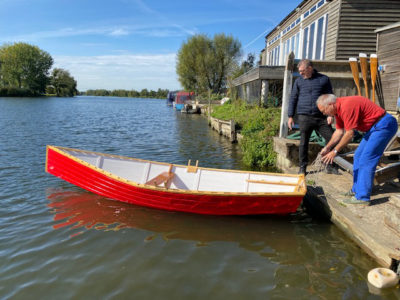
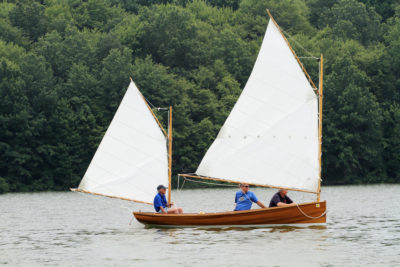
Join The Conversation
We welcome your comments about this article. If you’d like to include a photo or a video with your comment, please email the file or link.